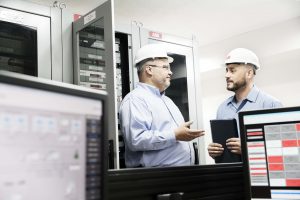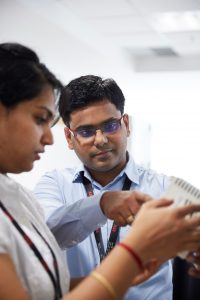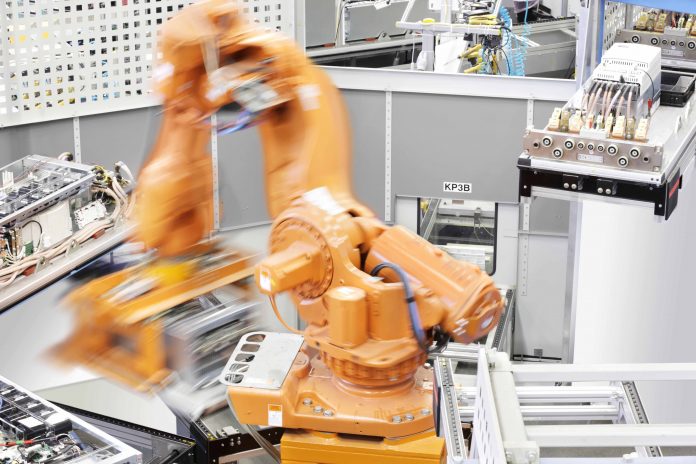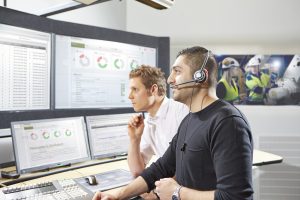Digitalization encompasses a transformation in the way industrial environments work. For the food and beverage industry, this means companies can better comply with legislation through a transformation in areas including connectivity, smart sensors, traceability, cloud computing and monitoring.
The shift toward digitalization is a natural continuation for leading food and beverage manufacturers, as the president of the Grocery Manufacturers Association in the USA, Pamela Baily explained. Baily said “food, beverage and consumer products manufacturers are leveraging innovation to optimize service to consumers and trading partners.”
Legislation
The Centre for Disease Control and Prevention (CDC) estimates that one in six Americans suffer with a food-borne disease each year, and 3,000 deaths are attributed to food-borne illness. When people’s lives are at stake there is no room for error.
Therefore, one of the largest concerns for the food and beverage industry is using technology to find the best method to keep well maintained traceability records, which show the journey of food from farm to fork.
Similarly, in the EU, the General Food Law Regulation (EC) 2002 requires business operators to keep detailed records of food they supply to others and food they receive from suppliers. Digitalization aids this process by automatically collecting data such as food temperatures throughout production.
Smart Sensors
Well-kept traceability records and sensor data can increase transparency between businesses, producers and consumers. This allows plant managers to respond faster in emergencies and use evidence to rebuild public trust following recalls.
 The processed and raw data can be stored and recalled if there are any issues further along in production. Cloud technology has made it easy to store and analyze data, removing any potential for human error by raising alerts and red flags immediately.
The processed and raw data can be stored and recalled if there are any issues further along in production. Cloud technology has made it easy to store and analyze data, removing any potential for human error by raising alerts and red flags immediately.
Sensors can aid traceability in two ways: they improve the accuracy of automated processes and they can track and store a variety of manufacturing data. Time-temperature history, physical shocks and other important credentials can be continuously measured and synchronized across the factory thanks to the IIoT.
Sensors used during food production can monitor products throughout the manufacturing and distribution supply chain. Sensors can form part of a device such as a smart container, or act standalone, depending on the needs and conditions of the manufacturing process.
In the future, smart containers may be able to self-diagnose and correct, for example by self-heating the container so that it remains above a threshold set out by health and safety guidelines such as Regulation (EC) 852/2004. A similar product, self-chilling beverage cans, produced by collaboration between Crown Cork & Seal and Tempra Technologies are paving the way.
As the costs of connectivity reduce, all-in-one products such as this are likely to become common across multiple industries.
Connectivity
For the first time in 2016, over half of the world’s developing population had internet access. As internet access widens and the price of networked devices drops, the volume of network traffic will rise.
Alongside this, the falling cost of producing devices such as WiFi-enabled temperature sensors mean they will become ubiquitous in industrial environments. However, more sensors lead to more raw data. This higher rate of data production presents issues of how to store and use the data.
WiFi connected versions of motion and temperature sensors themselves, when combined with cloud based storage may solve the problem of data capacity. Vast amounts of data can be instantly communicated, stored and even analyzed in the cloud, supplying useful information about traceability, production costs and predictions.
Cloud
Although almost sixty per cent of US food and beverage manufacturers use the Internet of Things (IoT) to track and trace ingredients, less than half are using the advanced analytics the IoT makes possible.
Cloud analytics, real-time monitoring, virtual commissioning and digital twinning — the ability to recreate the plant virtually — are just some of the techniques now helping plant managers in the food sector reduce unplanned downtime, improve safety and mitigate food emergencies.
Crucially, plant managers can use cloud to adapt to seasonal changes in demand, flexibly altering production setups, factory layouts and even reassigning staff without causing wider disruption.
Monitoring
 The huge amount of data produced by the connected factory can be used for many purposes in the food and beverage sector. For example, understanding why one machine is running hotter than another, or why one is not picking as many products, can help operators understand the efficiencies of each machine, data that can be used to improve plant maintenance.
The huge amount of data produced by the connected factory can be used for many purposes in the food and beverage sector. For example, understanding why one machine is running hotter than another, or why one is not picking as many products, can help operators understand the efficiencies of each machine, data that can be used to improve plant maintenance.
Many plants are using their own mobile networks to take monitoring to the next level. For example, on farms, sensors are used to monitor soil conditions, using the data to predict when animals are in heat and text the farmer with the information.
“In the future, agricultural machinery will work as rolling data centers and sensor technology will provide all the important information in real time” predict PwC advisors. “The challenge for farmers will lie in intelligently networking the technology and managing the data.”
Further down the production line, food retailers such as Ocado have built their own high speed 4G networks to communicate with thousands of robots.
Raw technical data has its uses, but these are greatly enhanced when the sensor data is combined with maintenance management or financial data. It is this consolidation that allows the information to come into its own and be useful for prediction, past analysis and optimization.
Although many businesses will be wary of the perceived complexity of undergoing digital transformation, it can bring about a true competitive advantage. Plant managers of the future should not only recognize the trend toward digitalization, but they should embrace the opportunities it brings, just as approximately 70,000 active contributors have wholeheartedly adopted Wikipedia, an opportunity produced by consumer digitalization.
About ABB
About ABB: ABB (ABBN: SIX Swiss Ex) is a pioneering technology leader in electrification products, robotics and motion, industrial automation and power grids, serving customers in utilities, industry and transport & infrastructure globally. Continuing more than a 125-year history of innovation, ABB today is writing the future of industrial digitalization and driving the Energy and Fourth Industrial Revolutions. ABB operates in more than 100 countries with about 132,000 employees





